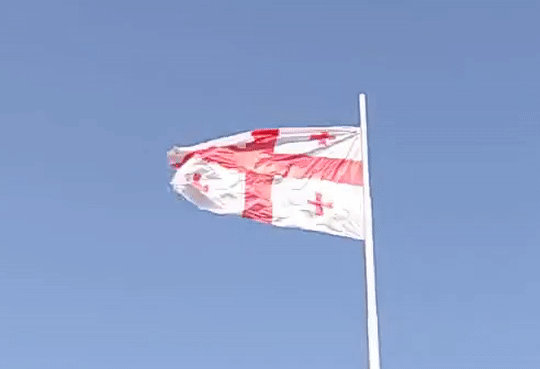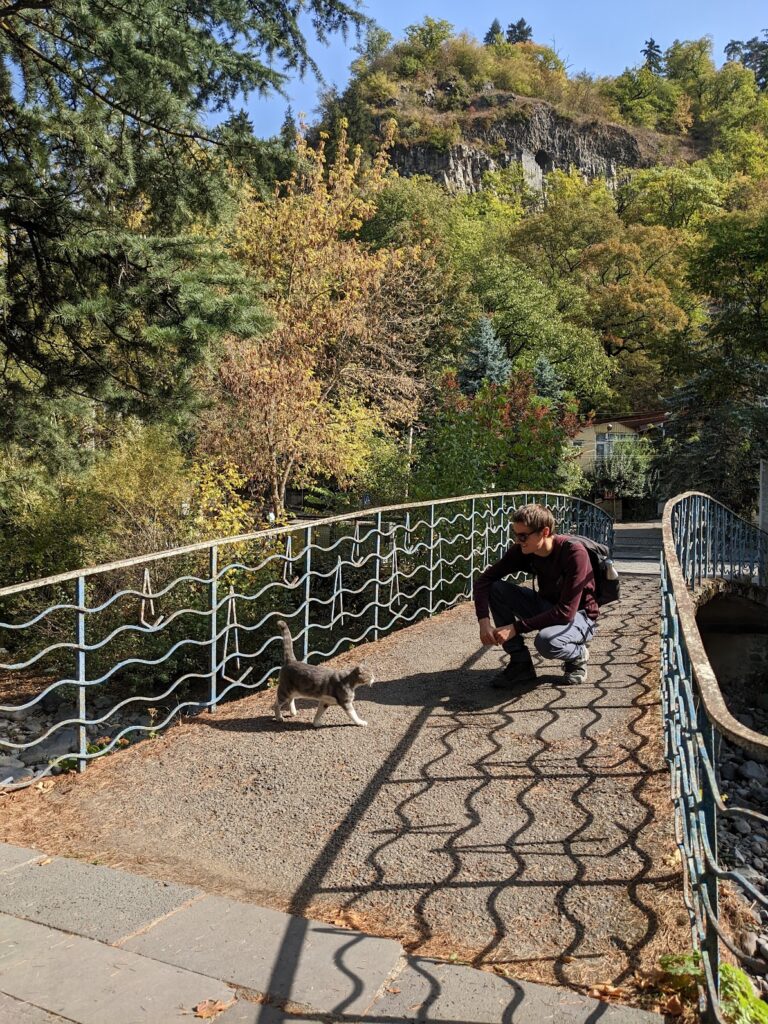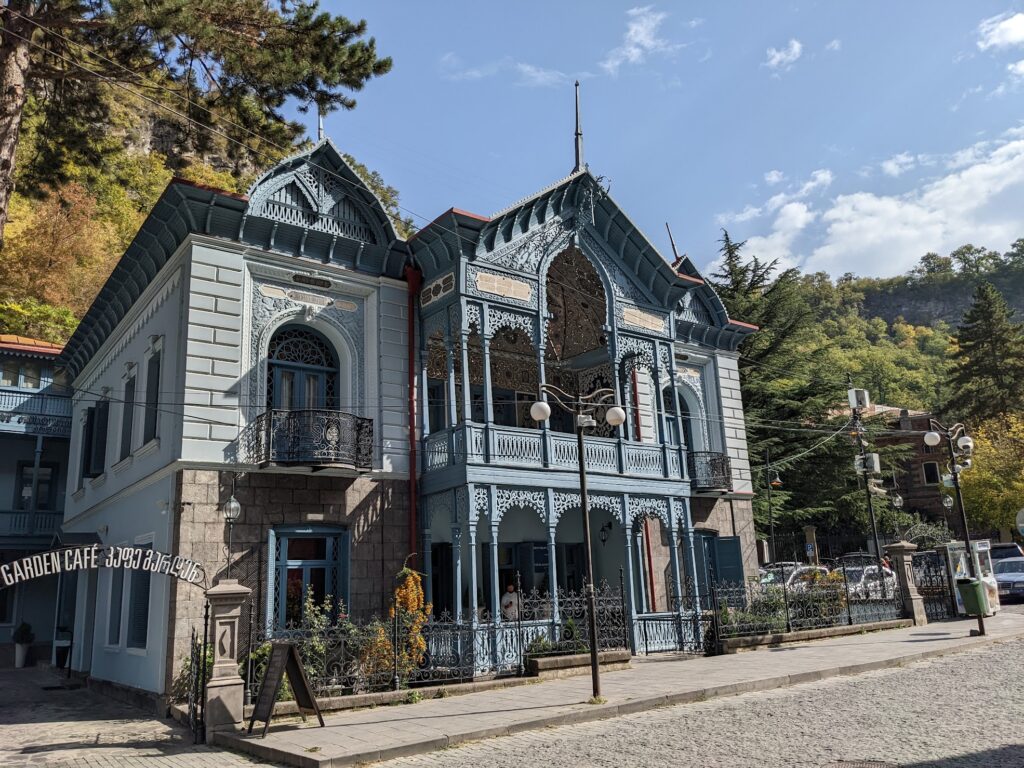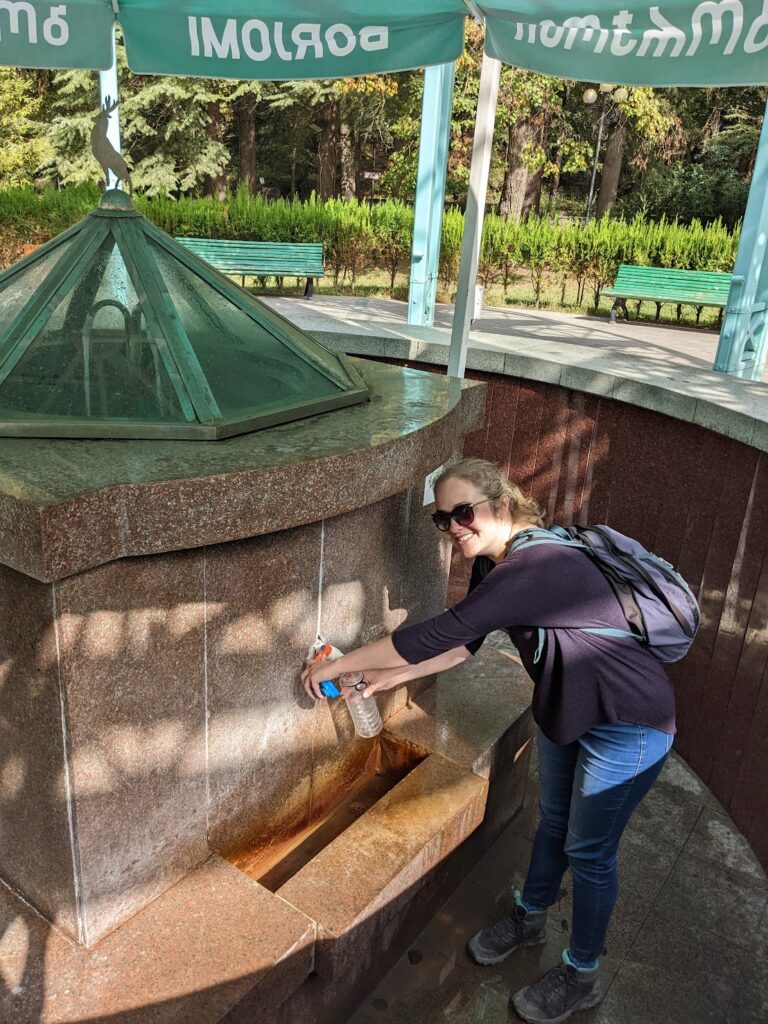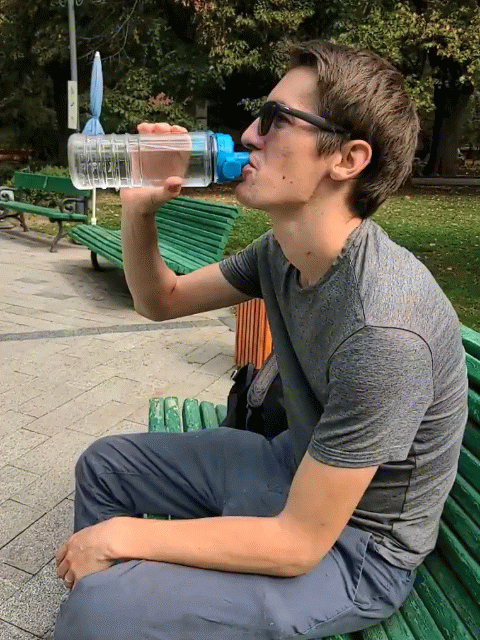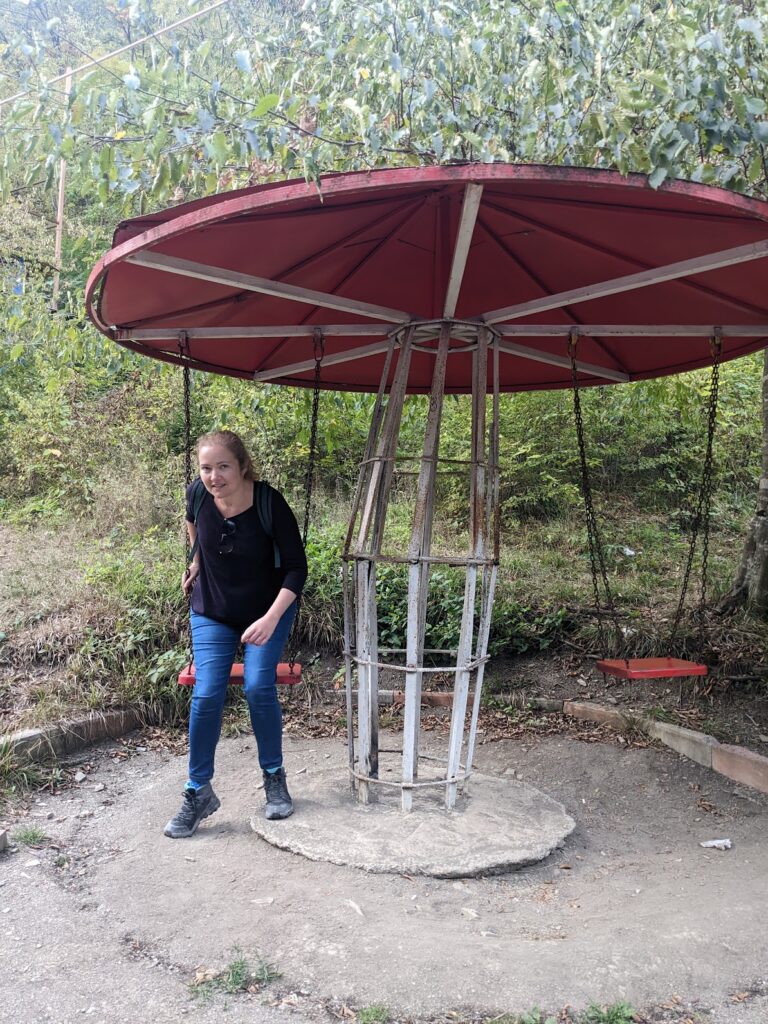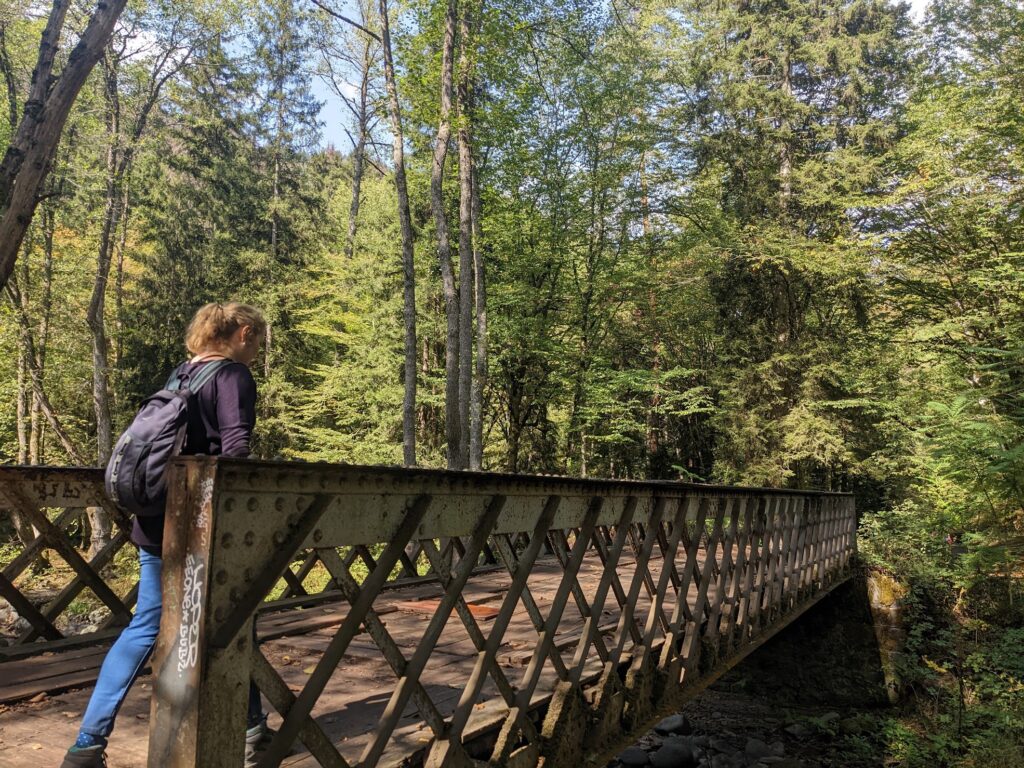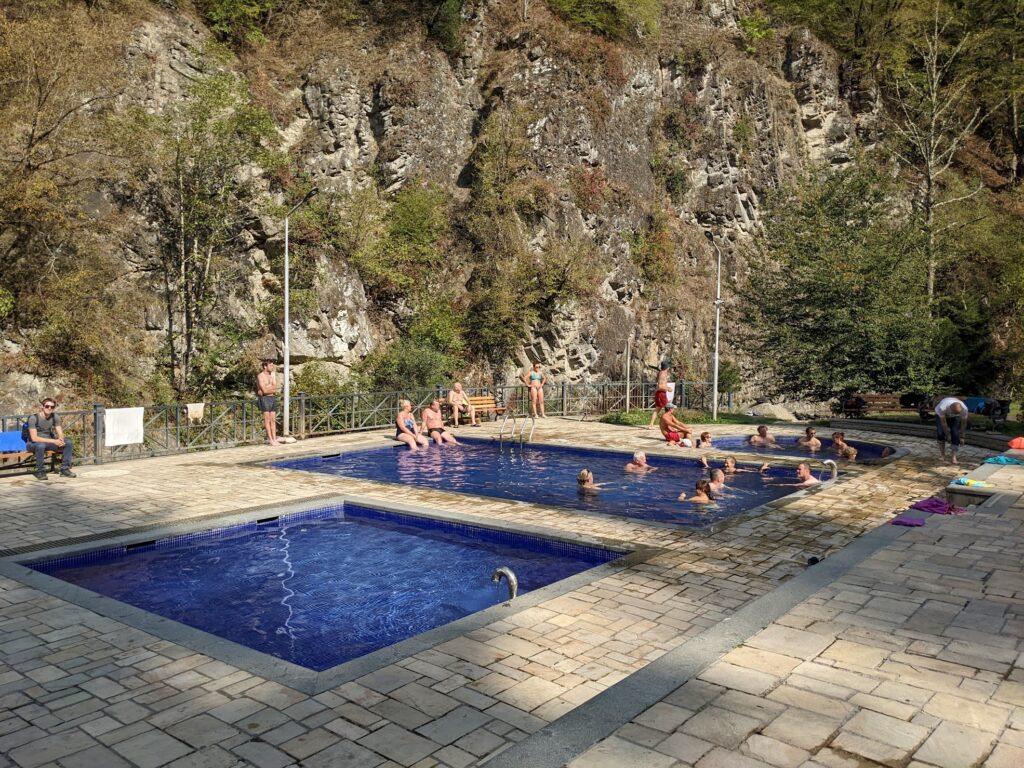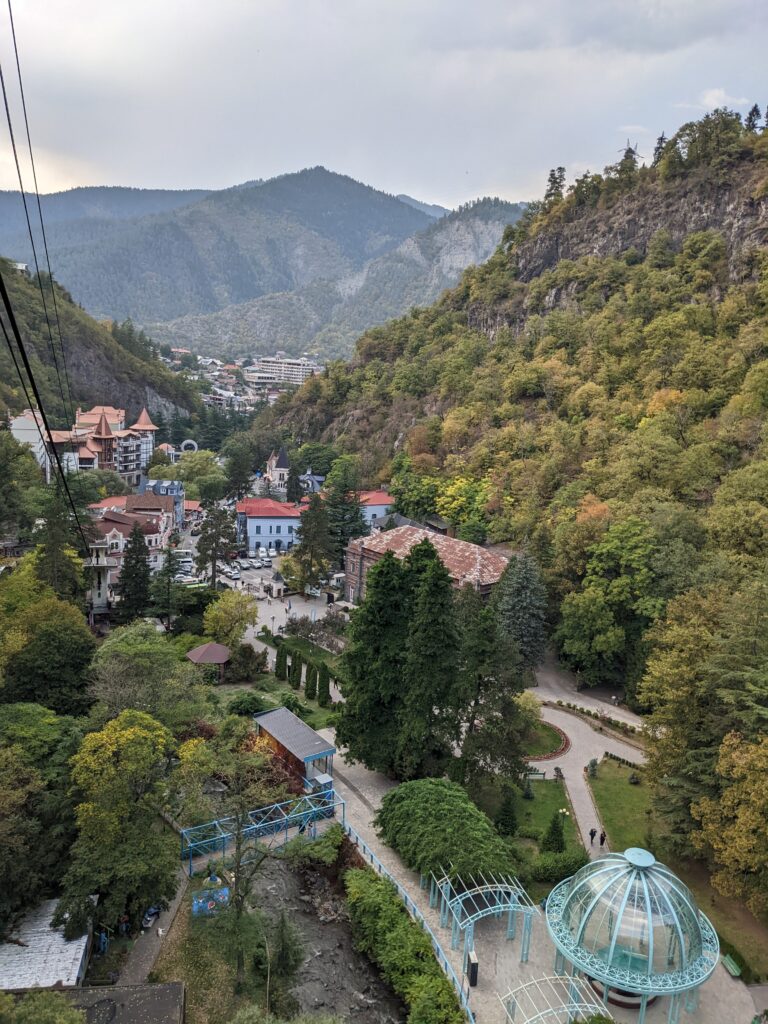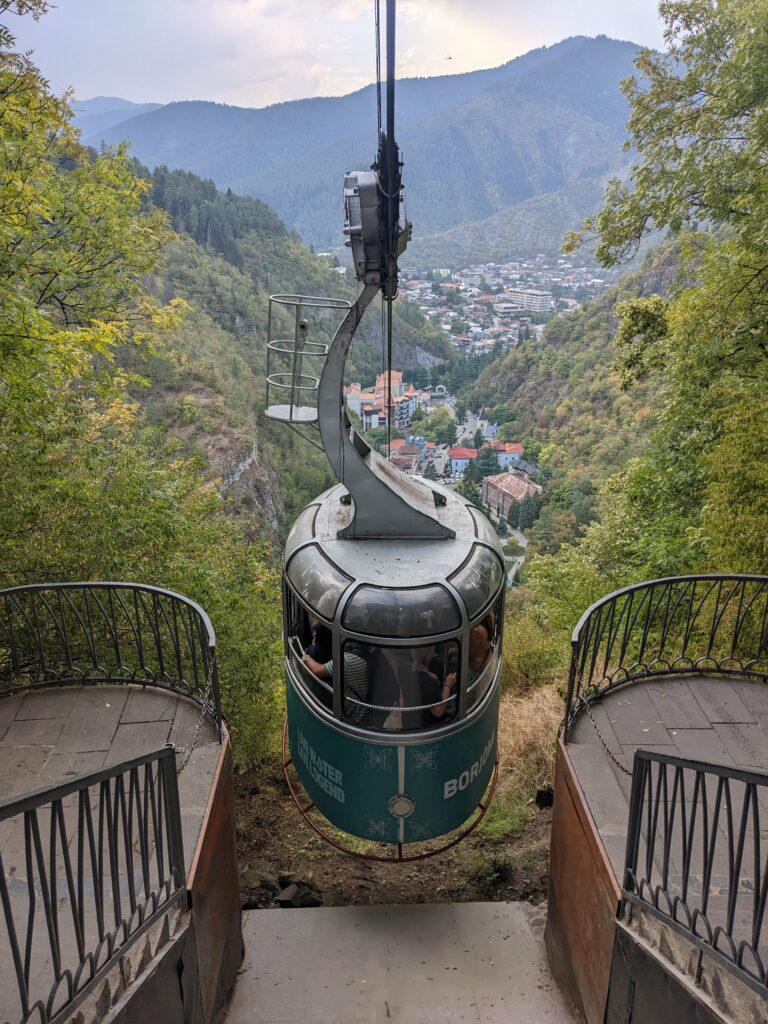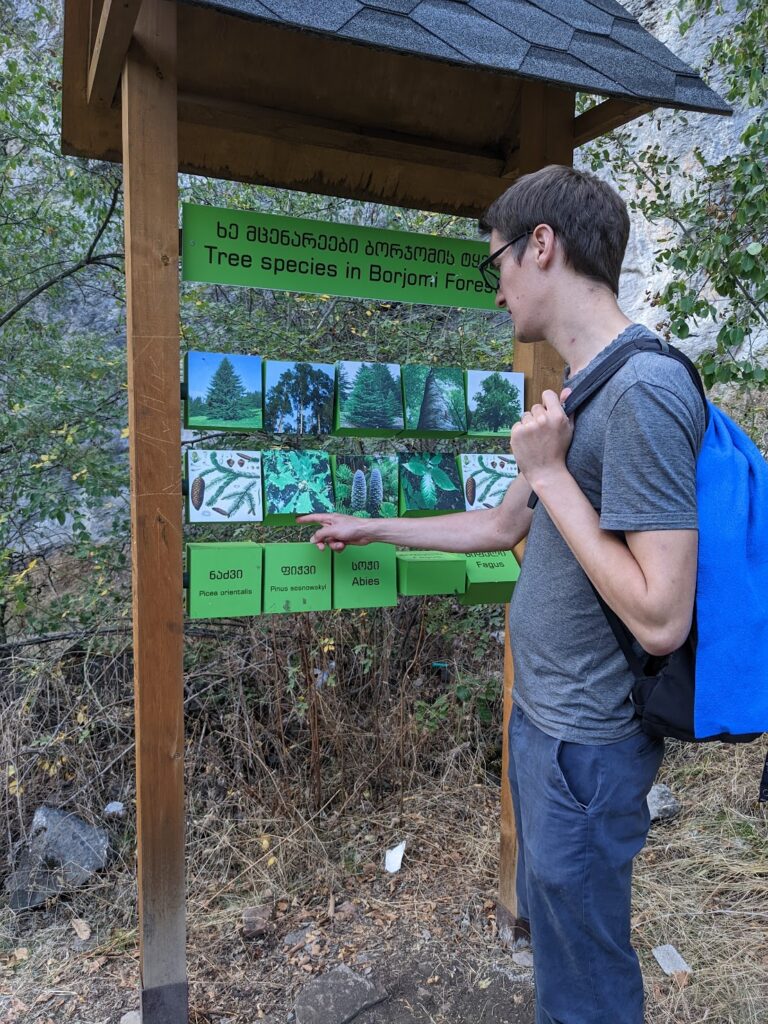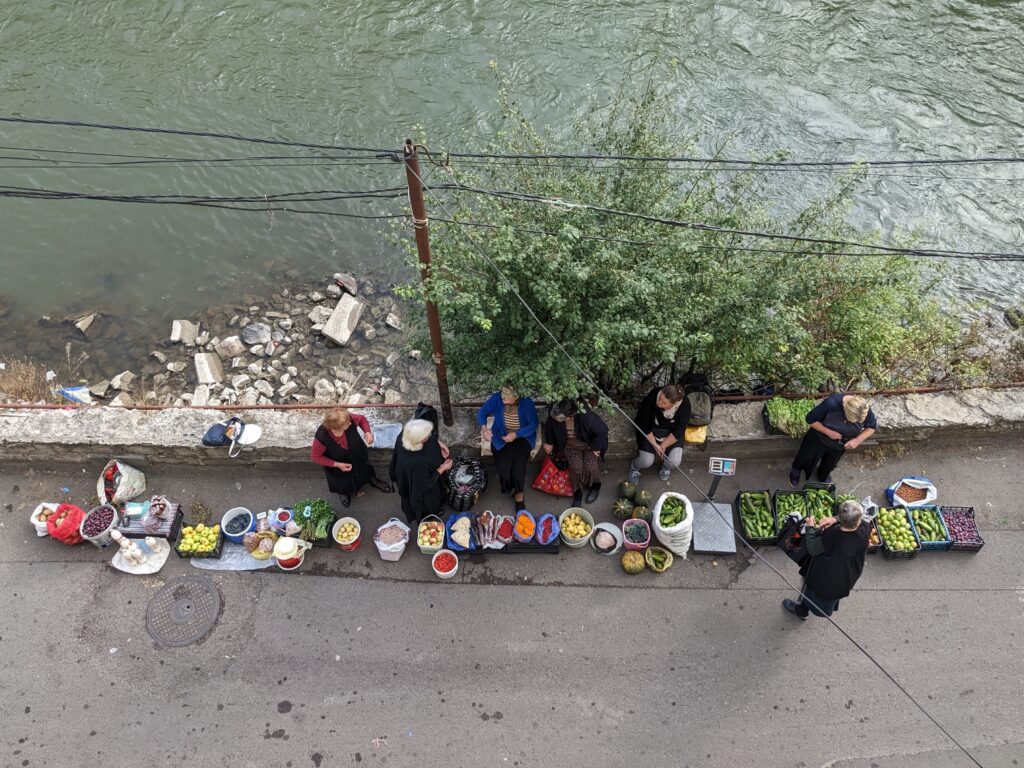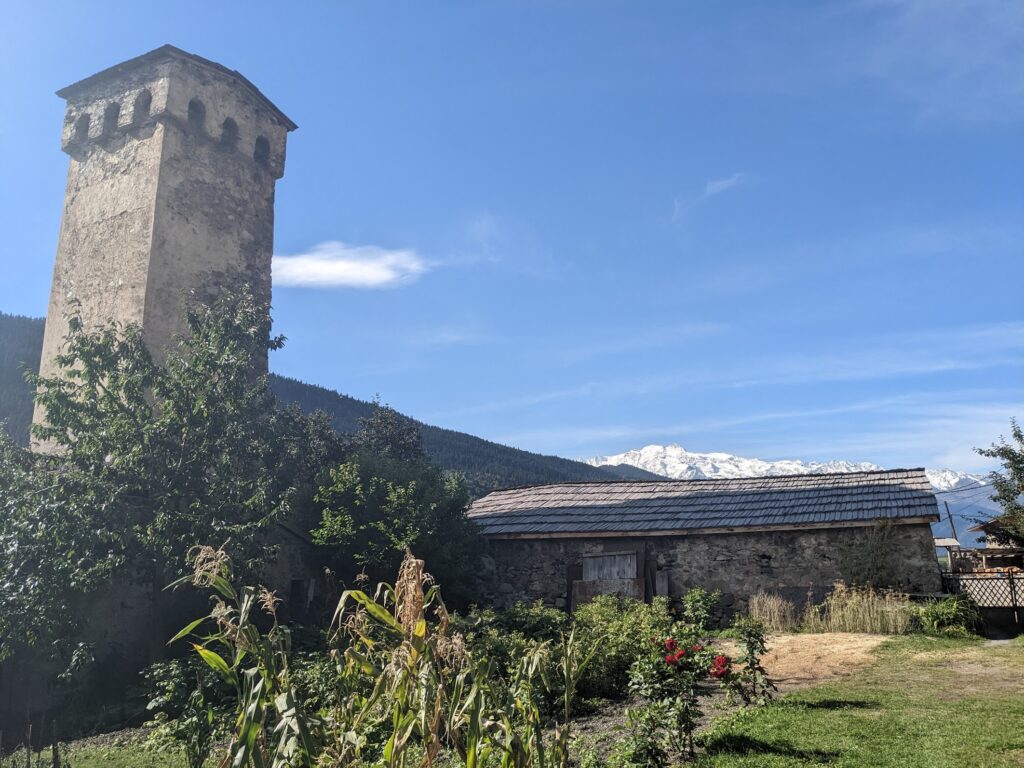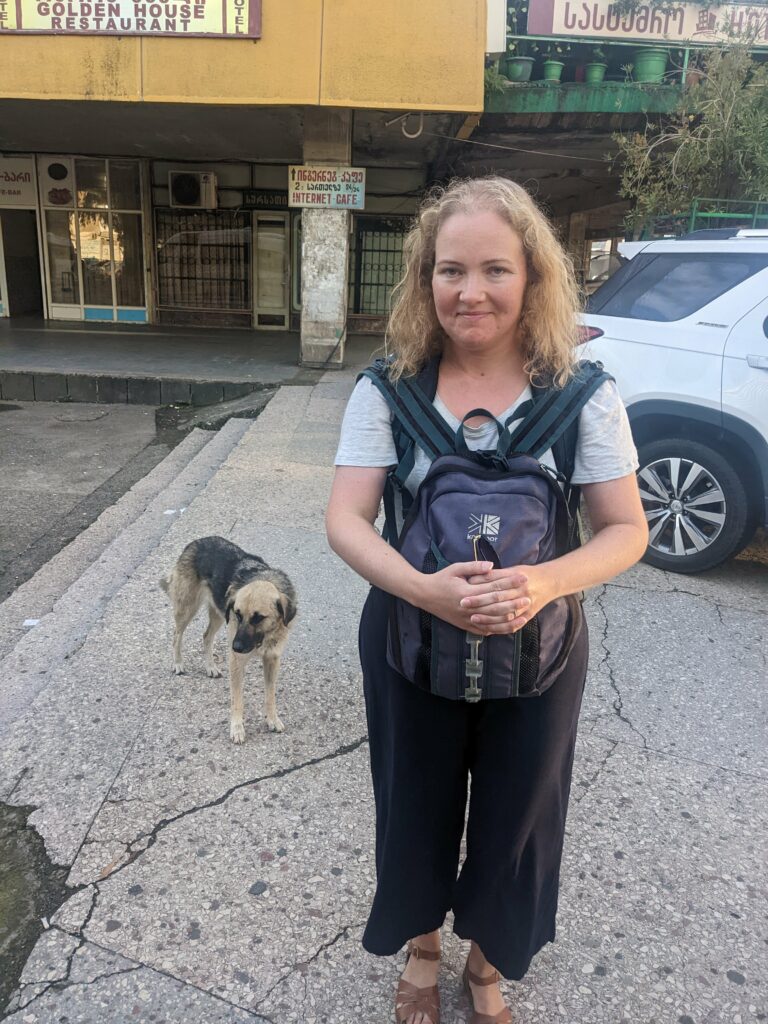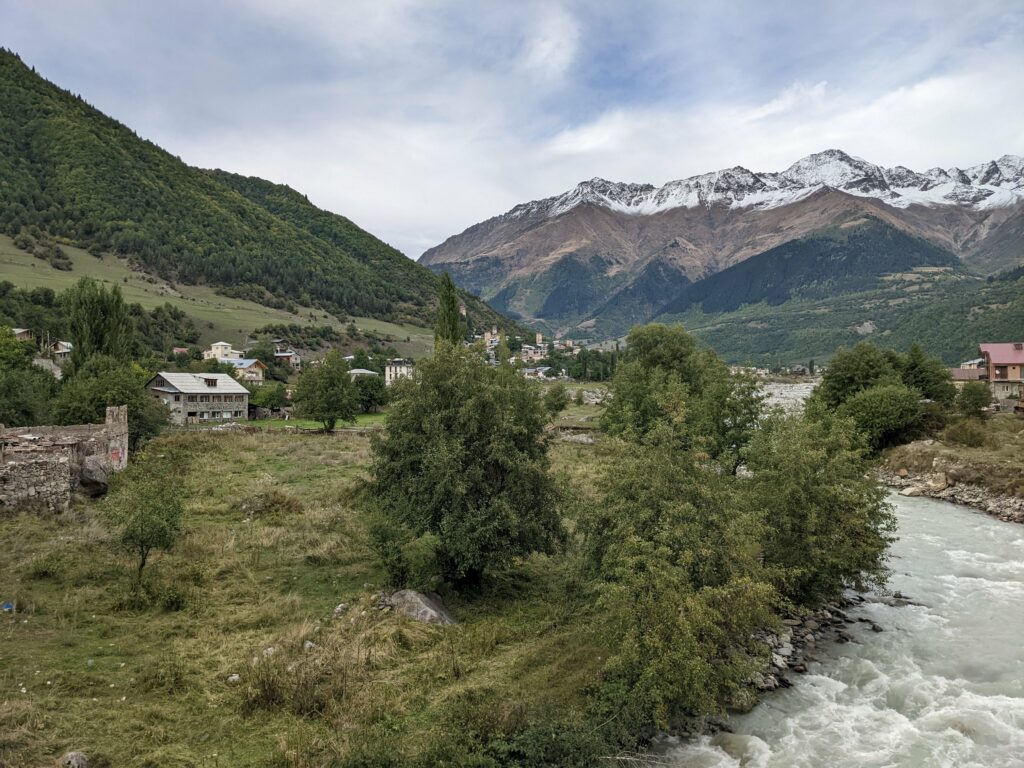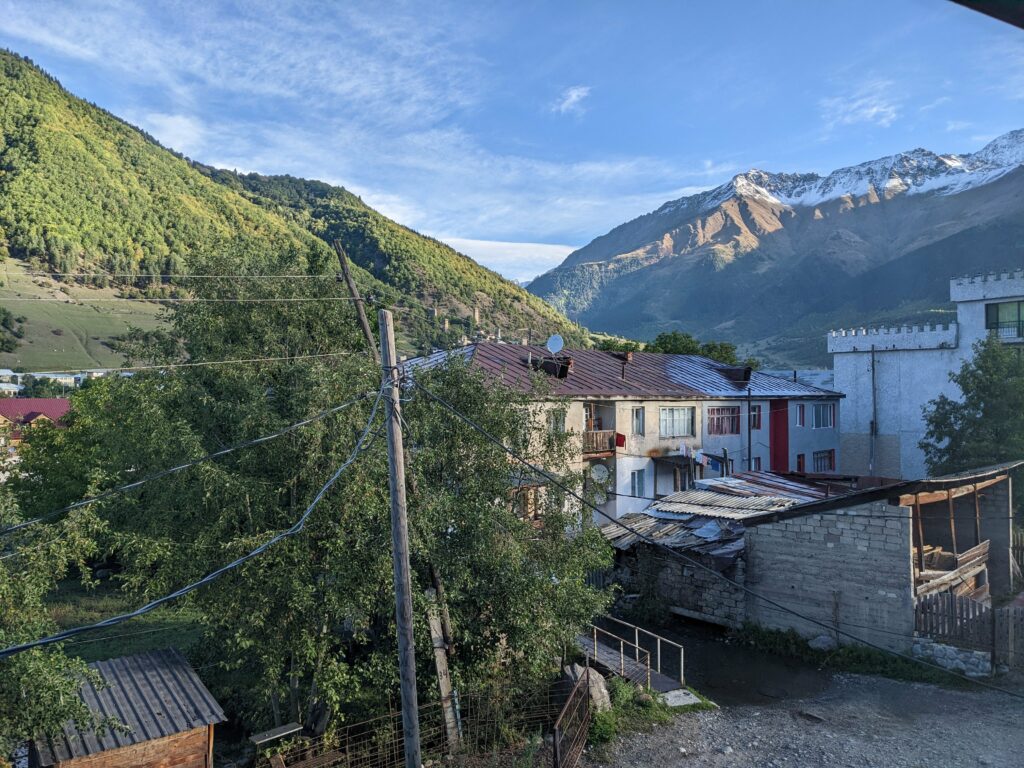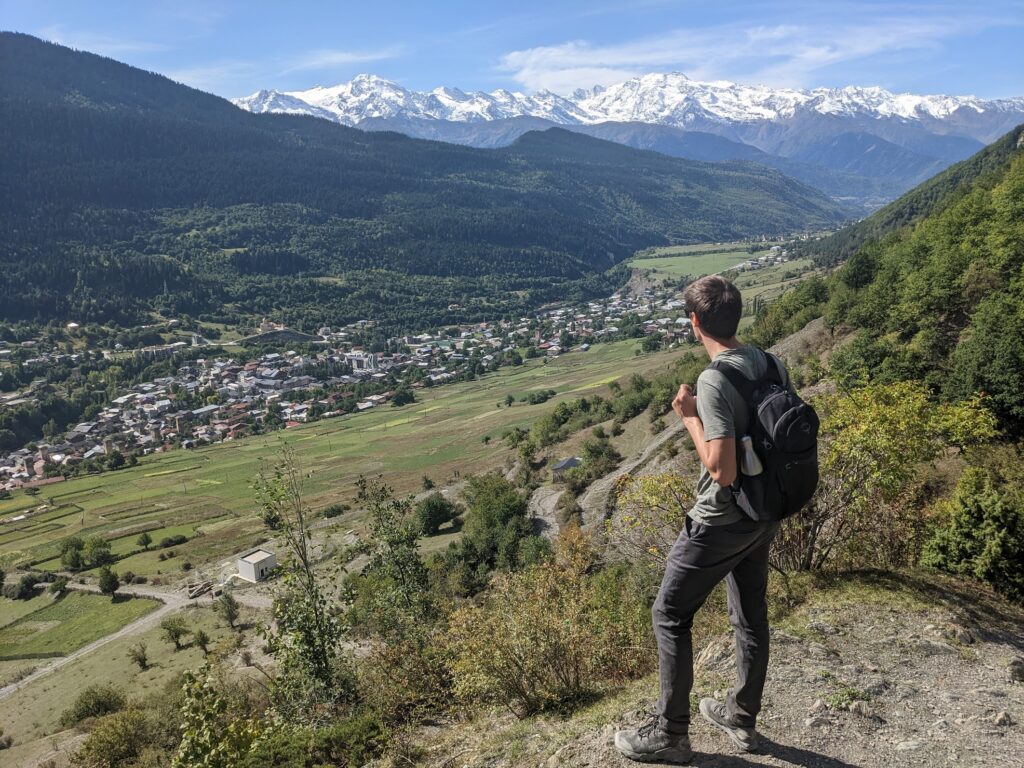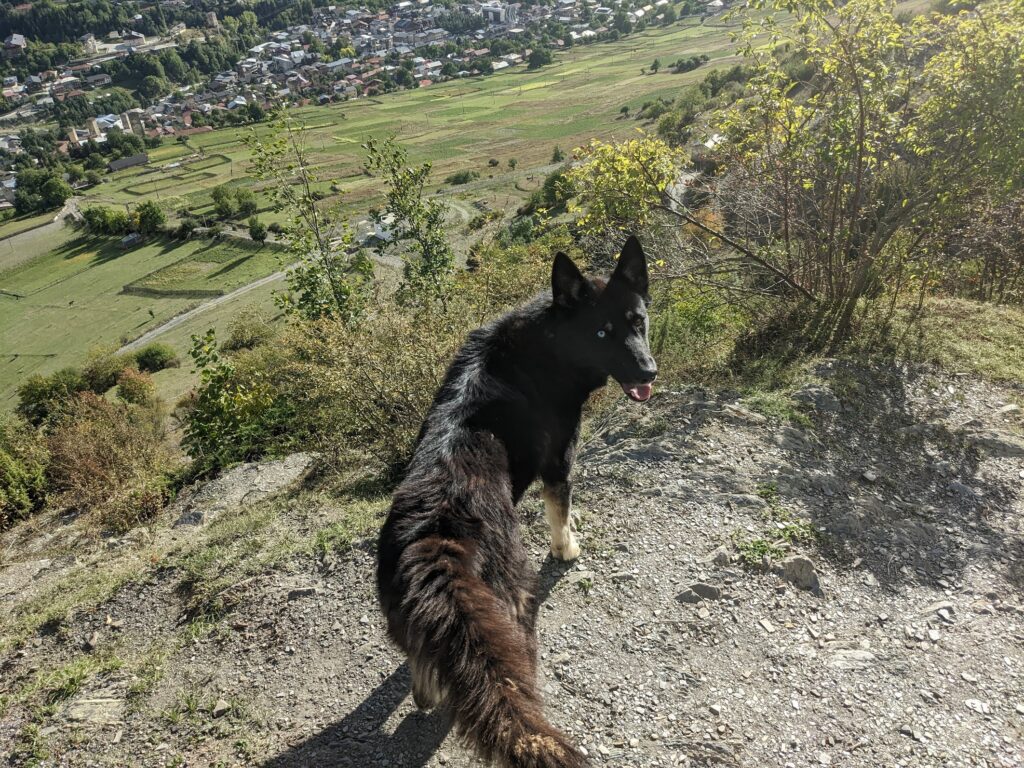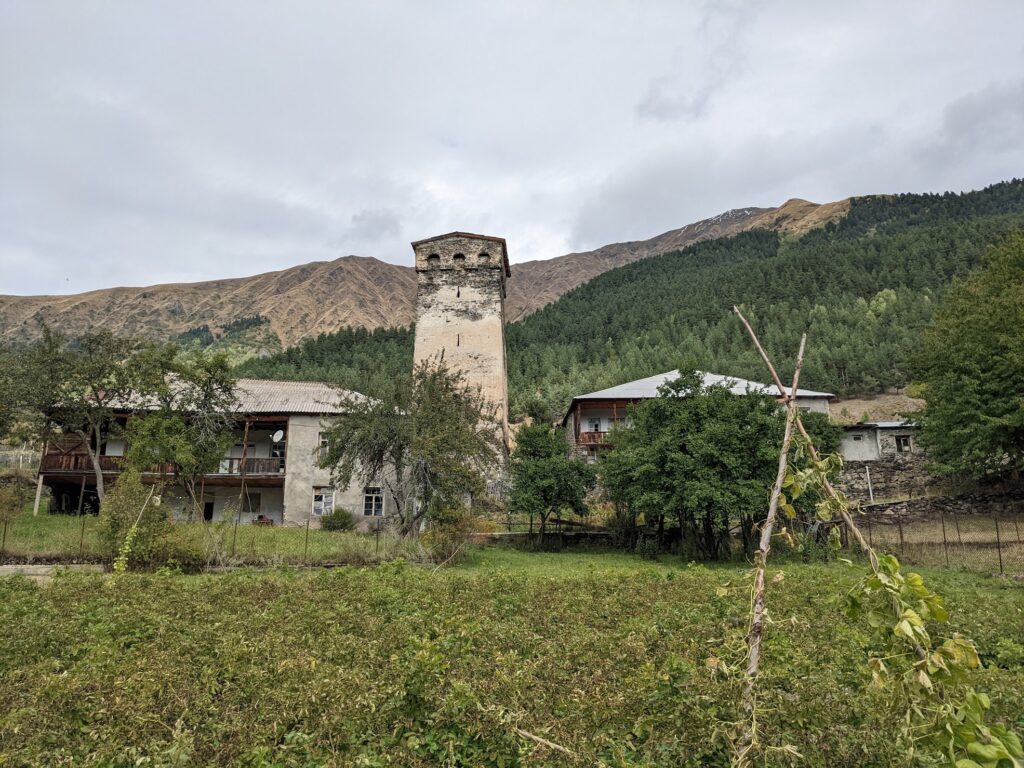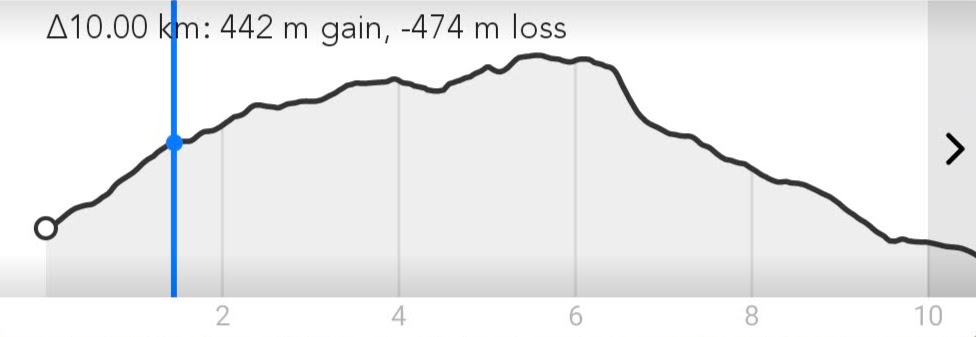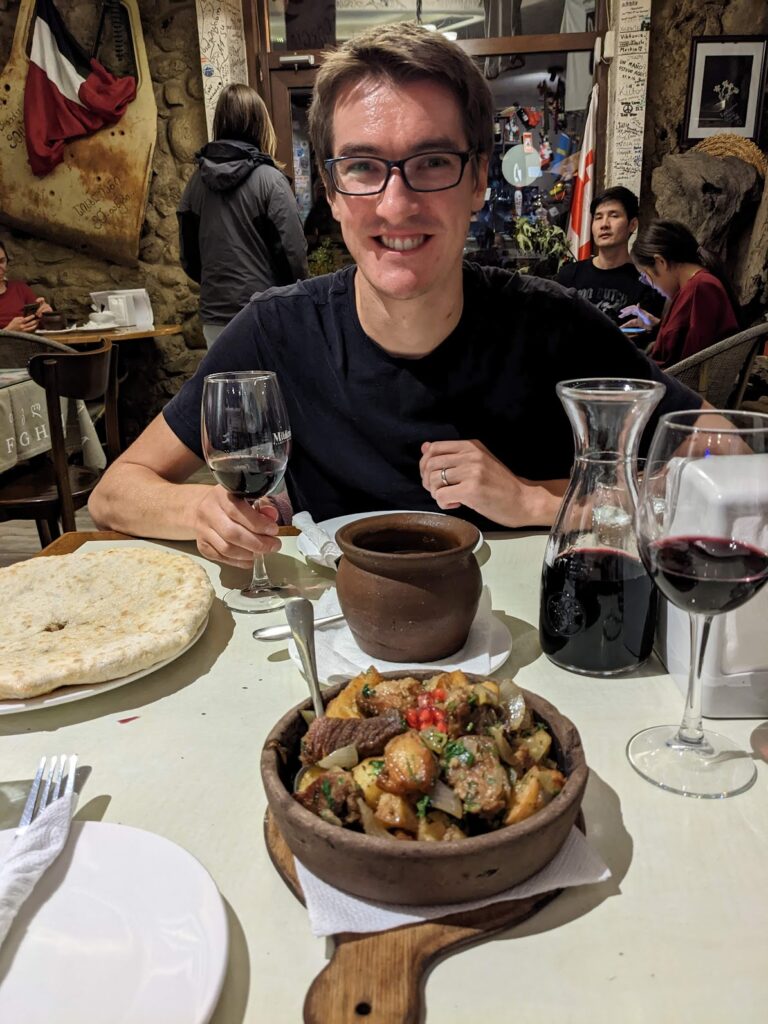While the transition from Greece to Turkey felt gradual, the difference between eastern Turkey and Georgia was immediate. Food instantly became more varied, Islam changed to Christianity, clothing became less conservative, the Latin alphabet became Mkhedruli script and the structured coach network was replaced with an informal collection of marshrutkas. After three weeks in Asia, it felt like we’d re-entered Europe.
Transport
We travelled from Batumi in the west to Tbilisi in the east almost exclusively by marshrutkas.
While we loved the organised chaos of marshrutkas, the lack of certainty kept us on our toes regarding whether they departed on a schedule or when full, and whether passengers should buy a ticket or pay the driver. We also found that driver care on the road varied wildly, and it seemed that essential requirements included a huge crack across the windscreen and reliably departing before closing the sliding minibus door. We also witnessed many pre-departure altercations between fellow passengers and sometimes the driver. We think the source of these arguments related to who sat where and whether the passenger had bought a ticket before reserving a seat, but we’ll never know for sure. The best part of these situations was that inevitably, every passenger on the marshrutka threw in their two cents, while we sat helplessly and watched it unfold.

While there are train lines in Georgia, there are generally only one or two trains a day, often at inconvenient times of day (or night!). We were most excited about the scenic Borjomi-Bakuriani railway, but sadly this route hasn’t restarted since it was paused during the pandemic. Still, I managed to weave a round-trip train journey into our day trip to Gori.
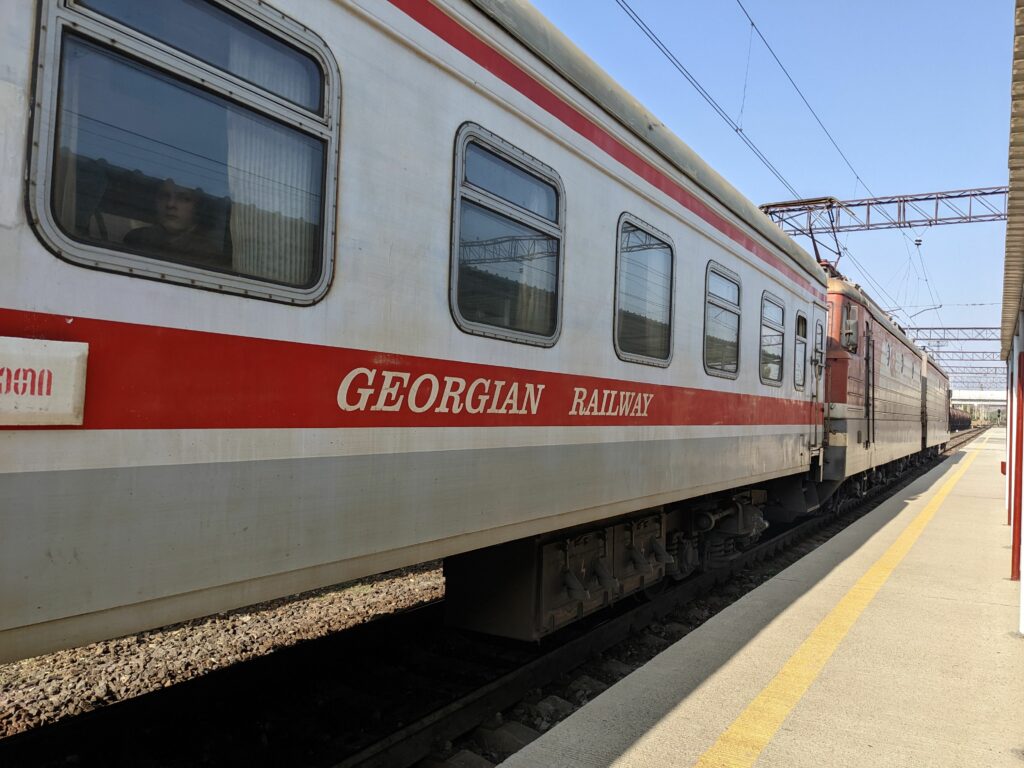
We enjoyed the amount of bureaucracy that went in to the purchase of this train ticket, despite Gori only being 79 km from Tbilisi. Our passports were required, seats were allocated, and after lots of typing, we were presented with an airline-style ticket each. And after all that, we found some people sitting in our seats anyway.
Carbon
Our route across Georgia was our second most carbon intensive journey so far, despite also being the shortest distance we’d travelled within a single country. This is largely because I’ve classified our marshrutka journeys as “average local bus”, which is nearly 4 times more carbon intensive than “coach”, according the the UK government’s carbon database. This is probably an overestimation of our carbon emissions, but it’s the best I could do with the available data.
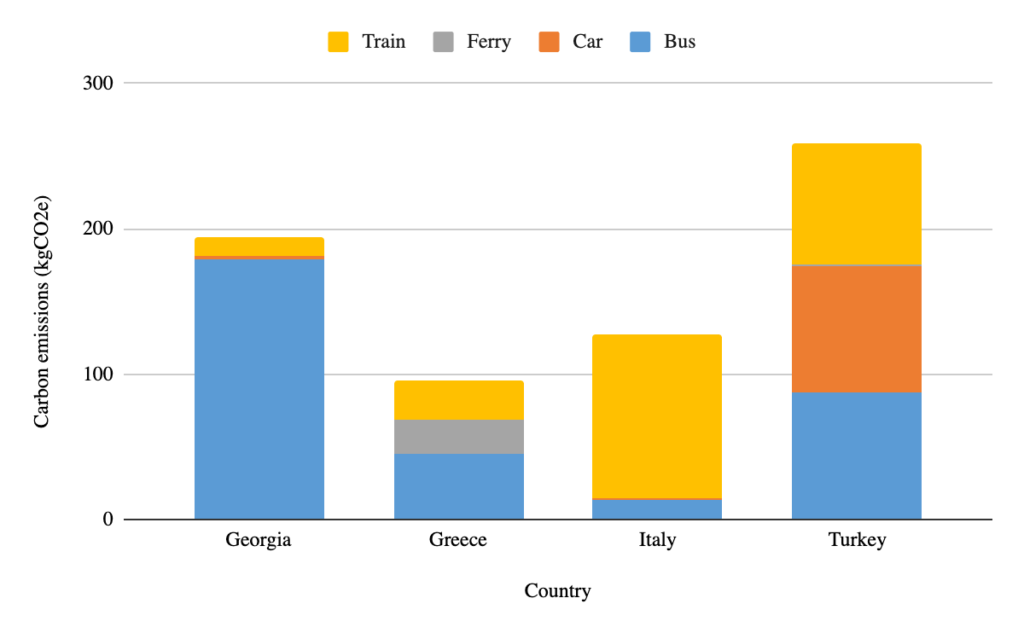
This brings our total carbon emissions from transport since leaving London to 676 kgCO2e, so we’re now well over halfway towards the minimum offset size of 1,000 kgCO2e.
Cost
We spent less money per day and less money in total in Georgia compared to any other country we’ve visited so far. This was despite feasting on Georgian delicacies in some great restaurants while we were there.
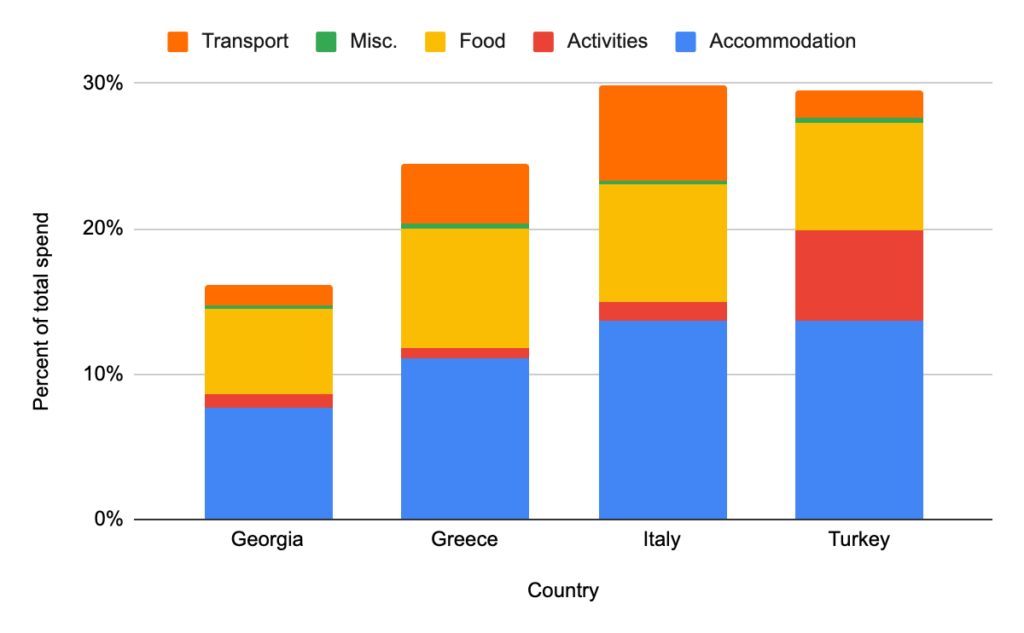
Transport costs were responsible for less than 10% of our expenditure in Georgia. This proportion is similar to Turkey, but noticeably less than the proportion spent on transport in Italy and Greece. Despite travel by marshrutka being quite hair-raising at times, they really were cost-effective. For instance, we travelled the 267 km from Batumi in the south to Mestia in the north for the equivalent of £16.50 each.
Cats
We saw about 5 cats per day in Georgia, which sadly doesn’t even hold a candle to Greece or Turkey’s totals.

We did meet some particularly fine chaps though – quality not quantity!
🏅Award for the cutest flood barrier
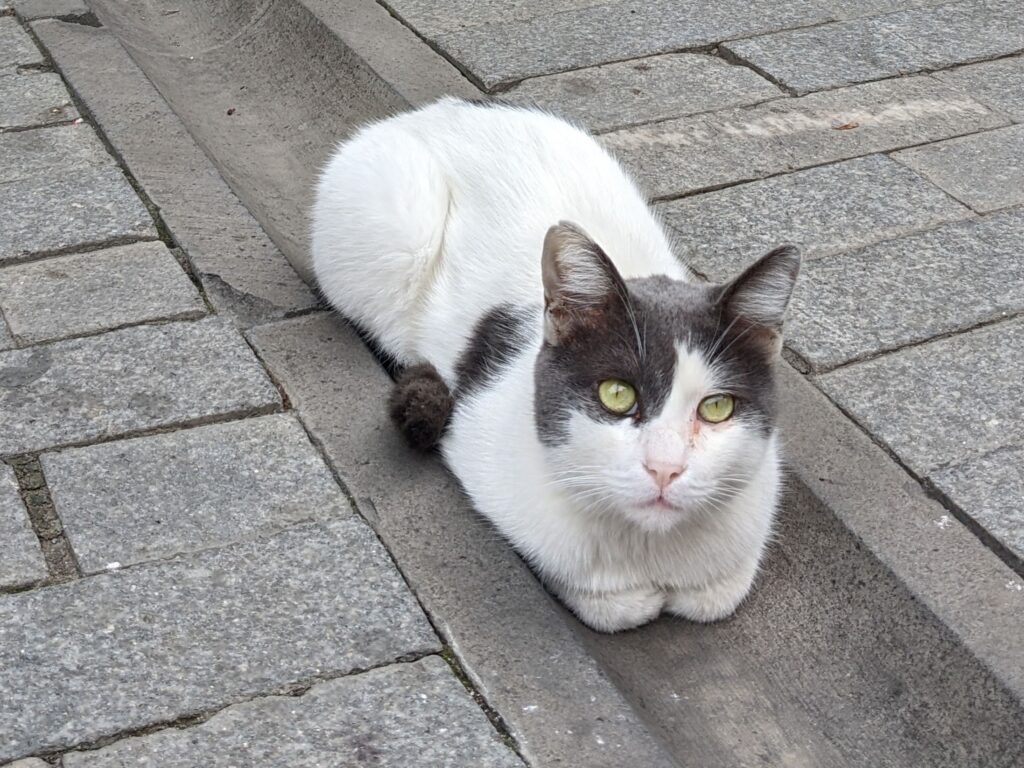
🏅Award for the most co-ordinated cat gang
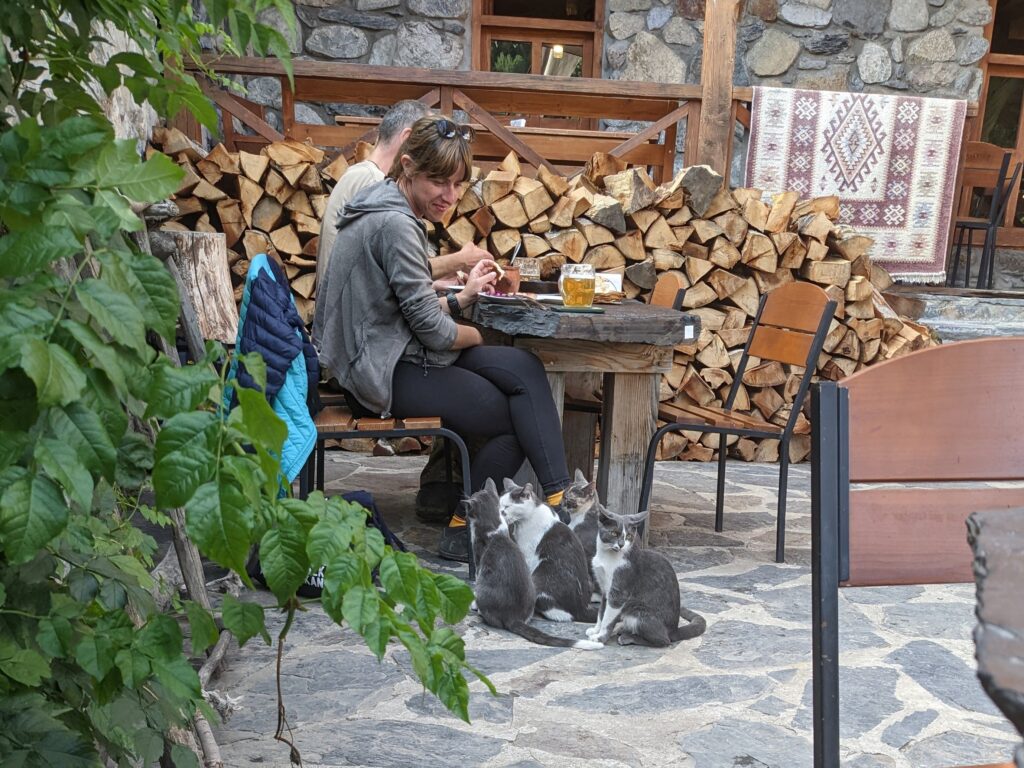
We also saw plenty of dogs, although these were not counted so rigorously. At first we were apprehensive of stray dogs when they approached us in the street or while we were hiking, but it was hard to not feel attached when they would quietly follow you for hours purely for company and the chance of a scrap of food. We also noticed that most of them had tags in their ears, presumably to track and record health status, which I thought was pretty impressive. Still, I think my favourite photo is this one of a stack of snoozing Georgian puppies.

From Tbilisi, we took the overnight sleeper train to Yerevan, the capital of Armenia, although this wasn’t where the day’s journey ended…
